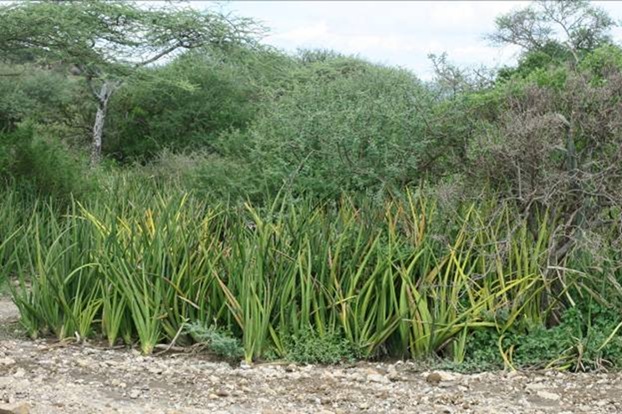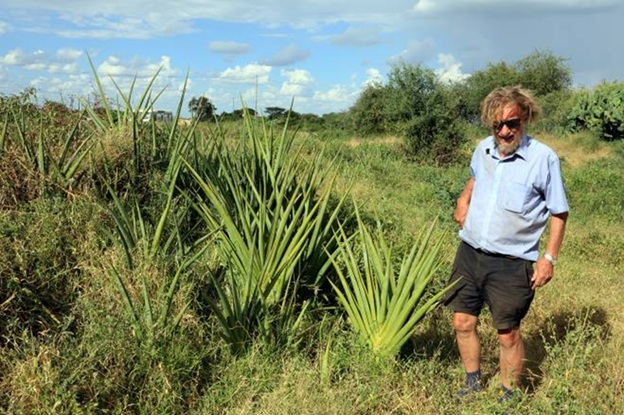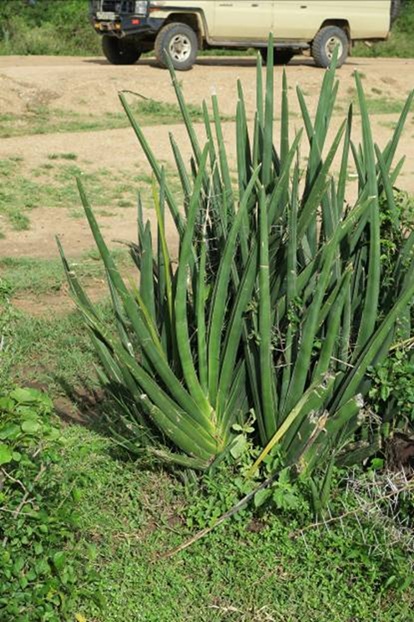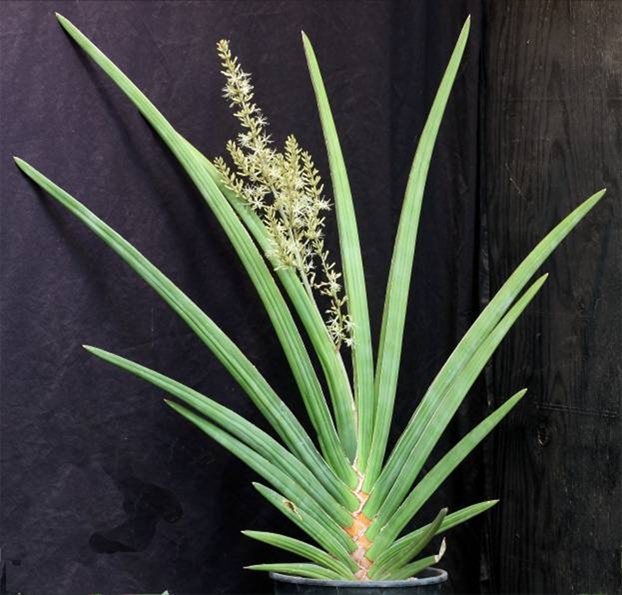| Protologue: |
Bulletin of Miscellaneous Information, Kew 5: 207 (1915). |
| Subgenus: |
Paniculatus |
| Group: |
Sansevieria ehrenbergii |
| Etymology: |
The epithet refers to the robust nature of the plant and its stands. |
| Distribution: |
Southern Kenya into northern Tanzania. |
| Brief Description: |
This is a caulescent species with a stem up to 60 cm and rhizomes about 2.5 cm in diameter. The area where the leaves meet the stem has a distinctive reddish-white herringbone pattern. The distichous leaves number 6 - 14 and are generally slightly spreading and laterally compressed with a wide groove along the upper surface. The smooth leaves are generally 30-60 cm (but up to 2 m long) and about 3 cm thick with a brown sharp tip. The leaves are generally yellow-green but can be dark green in deep shade, are faintly glaucous, with 14 - 30 darker green lines on the leaf sides. The margin is red-brown with a white edge. The inflorescence is 80-140 cm tall and paniculate with 4 - 6 flowers per cluster. |
| Similar Species: |
Sansevieria robusta has considerable variability over its large natural range, but it would be difficult to mistake this species for others in the genus, particularly with the distinctive herringbone pattern. Sansevieria perrotii has more spreading leaves but with the same coloration. Sansevieria ehrenbergii has more yellow-green leaves and a smaller stature. Sansevieria lavranii tends to be more upright and most of its forms are blue-green. |
| |
| |

A dense stand of Sansevieria robusta in the Rift Valley of southern Kenya.
|
| |

Len Newton next to a small stand of Sansevieria robusta north of Isiolo, Kenya.
|
| |

Sansevieria robusta near Mbeya, Tanzania.
|
| |

Sansevieria robusta flowering in cultivation showing the distinctive herringbone pattern on the face of the stem.
|

